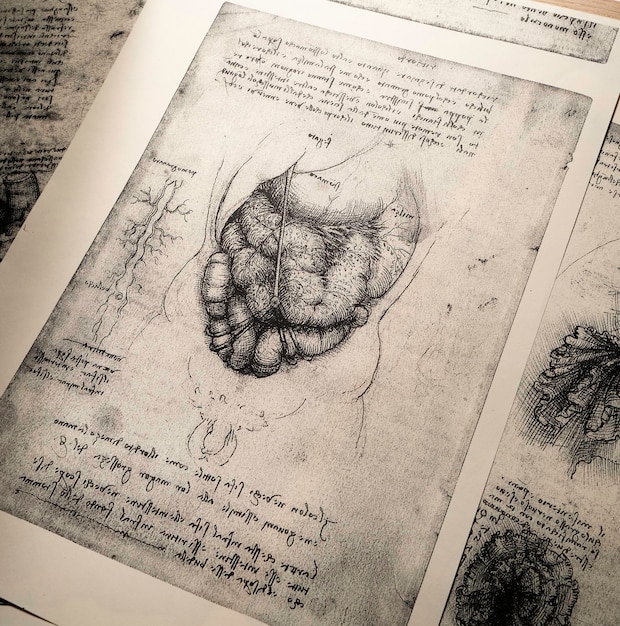Grimoires Unveiled: Key Texts for American Occultists Compared

Grimoires Unveiled: A Comparative Analysis of Three Key Texts for American Occultists explores and contrasts influential grimoires, providing American occultists with insights into their historical context, practical applications, and enduring relevance in contemporary occult practices.
The world of occultism is rich with ancient texts, often shrouded in mystery and intrigue. For American occultists, understanding these texts, particularly the grimoires, is crucial for deepening their knowledge and practice. This article, Grimoires Unveiled: A Comparative Analysis of Three Key Texts for American Occultists, delves into the essence of these books, examining their historical significance and practical applications.
By comparing and contrasting these influential grimoires, we aim to provide a clearer understanding of their contributions to the American occult landscape. Whether you’re a seasoned practitioner or a curious newcomer, this exploration will offer valuable insights into the core texts that shape modern occult practices.
Understanding Grimoires: An Introduction
Grimoires are more than just old books; they are repositories of magical knowledge, spells, rituals, and invocations. They serve as guides for practitioners, offering instructions on how to interact with the spiritual world and harness its power. Grimoires Unveiled: A Comparative Analysis of Three Key Texts for American Occultists, therefore, begins with understanding what makes a grimoire a grimoire.
These texts typically include a blend of practical magic, cosmology, and moral teachings, reflecting the worldview of their authors and the socio-cultural context in which they were written.
The Purpose and Structure of Grimoires
Grimoires are designed to provide a comprehensive guide to magical practice. They often begin with instructions on preparing the ritual space, crafting tools, and purifying oneself. Understanding the structure helps in properly utilizing its teachings.
- Ritual Preparation: Detailed instructions on cleansing, consecration, and setting up the magical workspace.
- Invocation and Evocation: Methods to call upon spirits, deities, or other entities for assistance or knowledge.
- Spell Casting: Specific spells and procedures for achieving desired outcomes, such as healing, protection, or divination.
- Tools and Materials: Guidance on creating and using magical tools, such as wands, talismans, and amulets, as well as sourcing necessary ingredients.
In essence, grimoires are comprehensive guides designed to empower practitioners with the knowledge and tools necessary to navigate the complexities of magical practice.

The Key of Solomon: A Foundational Text
The Key of Solomon stands as one of the most influential grimoires in Western occultism. Its impact on subsequent magical traditions is undeniable, making it a cornerstone text for any serious occultist. Grimoires Unveiled: A Comparative Analysis of Three Key Texts for American Occultists gives considerable attention to this classic.
This grimoire is attributed to King Solomon, the biblical figure renowned for his wisdom and magical abilities. The text offers a wide range of spells, rituals, and instructions for invoking spirits and commanding their services.
Historical Context and Origin
Though attributed to King Solomon, The Key of Solomon likely originated during the Middle Ages or Renaissance. Understanding its historical context is crucial for appreciating its enduring influence.
- Medieval Origins: The text’s origins can be traced back to a period of intense interest in magic and the supernatural.
- Renaissance Influence: During the Renaissance, the grimoire gained prominence as scholars and magicians sought to revive ancient wisdom.
- Syncretism: The text blends elements of Jewish mysticism, Christian theology, and Greco-Roman magic.
The Key of Solomon‘s enduring appeal lies in its comprehensive nature and its promise of empowering practitioners with divine authority.
The Lesser Key of Solomon (Goetia): Demonic Arts
The Lesser Key of Solomon, also known as the Lemegeton Clavicula Salomonis, is a collection of grimoires, with the first book, Goetia, being the most renowned. Goetia focuses on the evocation of 72 demons. Understanding its place in tradition is key to Grimoires Unveiled: A Comparative Analysis of Three Key Texts for American Occultists.
Unlike The Key of Solomon, which emphasizes divine magic, Goetia explores the darker aspects of occultism, offering practitioners the means to command powerful demonic entities.
Goetic Hierarchy and Rituals
Goetia presents a detailed hierarchy of demons, each with their own sigil, attributes, and abilities. The rituals for invoking these demons are complex and require careful adherence to established procedures.
The book contains:
- Descriptions of 72 demons, their sigils, and their specific powers.
- Instructions for creating the necessary tools and preparing the ritual space.
- Detailed steps for performing the evocation, including chants, prayers, and gestures.
The rituals are designed to establish a relationship between the magician and the demon, enabling the magician to command the demon’s services. Studying this provides insight into the comparative analysis of occult texts.
The Book of Abramelin: Ascending to Divinity
The Book of Abramelin offers a unique approach to magic, focusing on spiritual purification and the attainment of divine knowledge. Grimoires Unveiled: A Comparative Analysis of Three Key Texts for American Occultists considers it a key text due to its singular emphasis.
Attributed to Abraham of Worms, a 15th-century Kabbalist, the grimoire outlines a complex ritual process for contacting one’s Holy Guardian Angel and gaining access to profound spiritual insights.

The Abramelin Operation and its Stages
The Abramelin operation is a lengthy and demanding process, typically lasting six months or more. It involves rigorous self-discipline, prayer, and meditation, aimed at purifying the practitioner’s soul.
The operation consists of several stages:
- Preparation: This involves setting up a suitable oratory, cleansing oneself, and making the necessary arrangements.
- Invocation: The practitioner invokes their Holy Guardian Angel through prayer, meditation, and ritual.
- Conversation: The goal is to establish a clear and direct line of communication with the Angel.
- Acquisition of Knowledge: Once the connection is established, the practitioner can ask questions and receive divine guidance.
The Book of Abramelin is notable for its emphasis on spiritual growth and its promise of unlocking deep mystical knowledge.
Comparative Analysis: Differences and Similarities
When comparing these three grimoires, it becomes apparent that they offer distinct paths to magical power and spiritual enlightenment. However, beneath the surface, there are also notable similarities. Understanding these nuances is central to Grimoires Unveiled: A Comparative Analysis of Three Key Texts for American Occultists.
Examining their differences and similarities can provide a more holistic understanding of Western occultism.
Key Contrasts and Common Themes
While each grimoire has its unique strengths and weaknesses, they all reflect core principles of Western magical thought. Distinguishing contrasts and common themes helps unveil their purpose.
The texts share common principles, yet offer different approaches:
- The Key of Solomon focuses on commanding spirits through divine authority, Goetia specializes in demonic evocation, while The Book of Abramelin aims at spiritual purification.
- The Key of Solomon and Goetia offer practical spells for immediate results, while The Book of Abramelin emphasizes long-term spiritual transformation.
- All three grimoires emphasize the importance of ritual preparation, the power of symbols, and the necessity of self-discipline.
Ultimately, the choice of which grimoire to study depends on the practitioner’s individual goals and spiritual inclinations.
| Key Point | Brief Description |
|---|---|
| 📜 Solomon’s Key | Divine magic for spirit command. |
| 😈 Lesser Key (Goetia) | Demonic evocation practices. |
| ✨ Abramelin’s Book | Spiritual purification for divine access. |
FAQ
A grimoire is a textbook of magic, typically including instructions on spell casting, rituals, divination, and the preparation of magical tools and ingredients. They are essential to the study of Grimoires Unveiled: A Comparative Analysis of Three Key Texts for American Occultists.
Because it is one of the most influential grimoires in Western occultism. Attributed to King Solomon, this text encompasses a wide array of magical practices, rituals, and invocations that have shaped modern occult traditions.
The Goetia focuses on the evocation of 72 demons, each with specific attributes and abilities. It provides practitioners with the means to command powerful demonic entities for various purposes, a key component in Grimoires Unveiled: A Comparative Analysis of Three Key Texts for American Occultists.
It differs by emphasizing spiritual purification and the attainment of divine knowledge through contact with one’s Holy Guardian Angel. The Abramelin operation involves a lengthy and demanding ritual process focused on inner transformation.
Despite their differences, all three grimoires emphasize the importance of ritual preparation, the power of symbols, and the necessity of self-discipline. These elements are crucial components in understanding magic.
Conclusion
In conclusion, Grimoires Unveiled: A Comparative Analysis of Three Key Texts for American Occultists provides a foundational understanding of these influential books. Each grimoire offers unique approaches to magic and spiritual development, providing practitioners with valuable tools and insights.
By exploring their differences and similarities, American occultists can gain a deeper appreciation for the rich and diverse landscape of Western occultism. The knowledge contained within these texts continues to inspire and guide practitioners today.





